The Best AI Tools Like ChatGPT
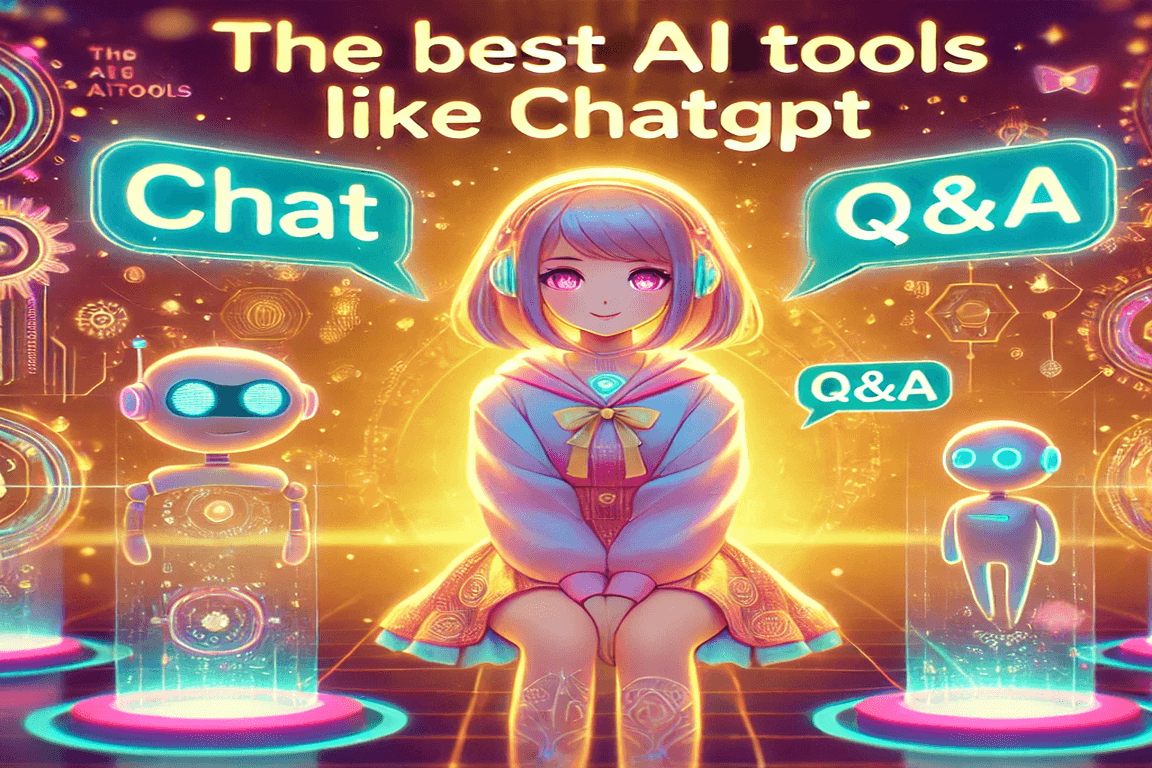
In the rapidly evolving landscape of artificial intelligence, tools like ChatGPT have become pivotal in various applications, from content creation to customer service. However, as the demand for AI-driven solutions grows, numerous alternatives have emerged, each offering unique features and capabilities. This article explores ten of the best AI tools similar to ChatGPT, delving into their features, similarities, and distinct attributes.
If you are new to AI tools, check out our beginner’s guide to AI tools, and if you would like to increase your productivity using AI, we have something for you too!
1. Google Gemini (Formerly Bard)
Google Gemini represents Google’s ambitious foray into conversational AI, evolving from its earlier model known as Bard. Launched by Google DeepMind, Gemini is designed to handle both text and images while integrating a memory system that allows it to recall previous interactions. This tool is particularly notable for its real-time data access capabilities, enabling it to provide up-to-date information directly from the web.
Gemini offers a powerful 1 million token context window for handling large documents, along with file uploads for analysis and text-to-image generation. It also provides customizable AI experts and integrates with Google Workspace apps for tasks like email drafting and brief creation, making it a versatile tool for personal and professional use.
Similar to ChatGPT, Gemini engages users in natural language conversations and can generate creative content. Its extensive training on diverse datasets allows it to answer a wide range of queries effectively. However, what sets Gemini apart is its integration with Google’s ecosystem, allowing seamless interaction with other Google services like Search and Maps. This connectivity enhances its utility for users who rely heavily on Google products.
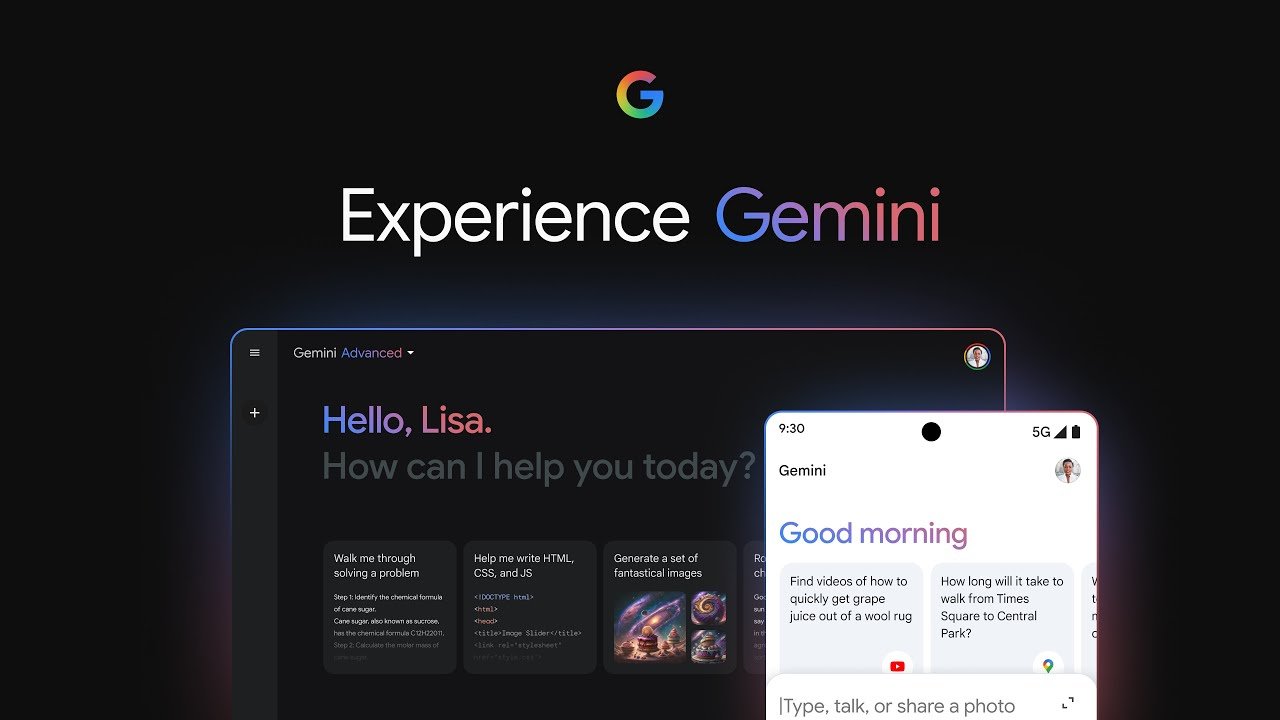
2. Microsoft Copilot
Microsoft Copilot emerged as a powerful AI assistant integrated within Microsoft Office products and the Edge browser. It leverages advanced AI models to assist users with document creation, summarization, and real-time information retrieval from the web. Launched in 2023, Copilot aims to enhance productivity by providing contextual assistance based on user activities.
Copilot offers contextual assistance across Microsoft Office apps like Word and Excel, generating text, improving writing, and providing real-time web data insights. It also automates tasks like document formatting and presentation creation, streamlining workflows and enhancing collaboration with AI-generated content.
While it shares similarities with ChatGPT in generating text and answering questions, Copilot’s unique feature lies in its deep integration with Microsoft applications. This allows it to summarize PDFs or webpages directly within Office tools, making it an invaluable asset for professionals who require efficient document management. Furthermore, Copilot offers image generation capabilities accessible to all users, unlike ChatGPT’s premium model restrictions.
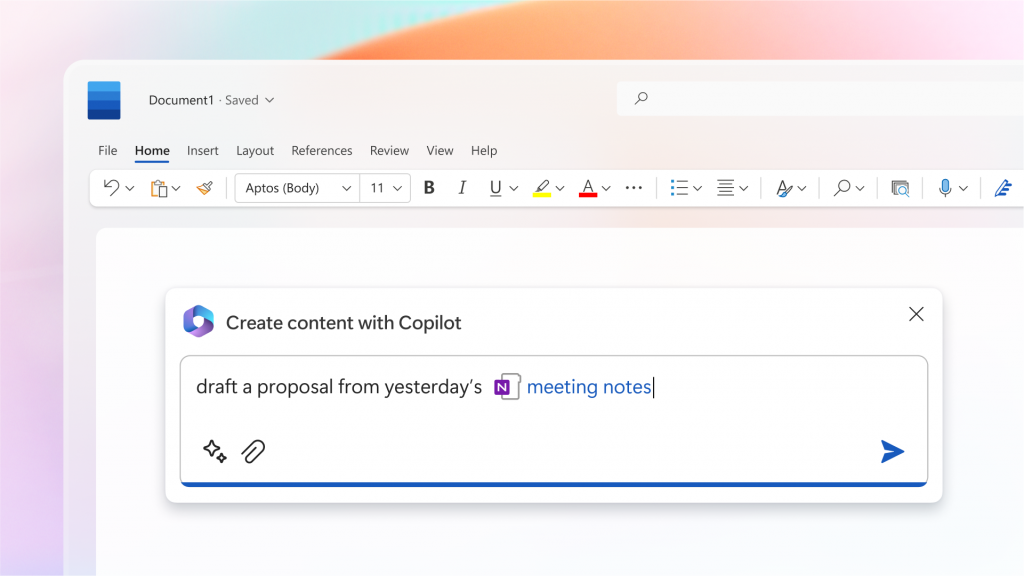
3. Perplexity AI
Perplexity AI is a conversational search engine that combines the functionalities of a chatbot with real-time information retrieval. Developed using OpenAI’s API alongside Claude 3 Haiku, Perplexity allows users to engage in dialogue while receiving answers backed by credible sources. Launched recently, it has quickly gained traction among users seeking reliable information without extensive browsing.
Perplexity AI stands out by providing source citations for every response, ensuring accuracy and reliability. It also offers real-time web access for current events and supports natural language queries for fluid, human-like conversations, delivering clear and concise answers.
Similar to ChatGPT in its conversational abilities, Perplexity distinguishes itself by providing citations for the information it presents. This feature addresses concerns regarding the authenticity of AI-generated content by ensuring that users can verify sources easily. Additionally, Perplexity’s minimalist interface enhances user experience by focusing on direct answers rather than prolonged interactions.
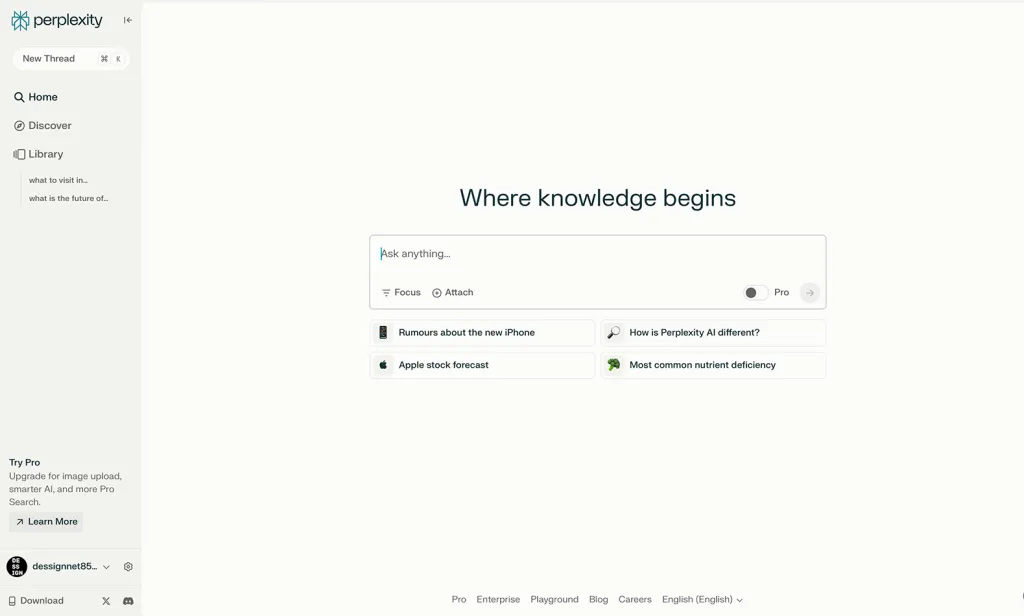
4. ChatSonic
ChatSonic is another contender in the realm of conversational AI developed by Writesonic. It markets itself as a more advanced alternative to ChatGPT by incorporating features like real-time Google search capabilities and multimodal responses that include text and images. Since its launch in 2022, ChatSonic has been tailored for content creators looking for innovative ways to engage audiences.
ChatSonic offers real-time web search, voice command support, and multimodal responses like images, making it highly versatile. These features make it especially useful for marketers and social media managers aiming for dynamic content creation and engagement.
While both ChatSonic and ChatGPT excel at generating text-based responses, ChatSonic’s ability to process files and images sets it apart. Users can upload documents or images for analysis or summarization, making it particularly useful for those needing quick insights from complex materials. However, some users find its interface slightly overwhelming compared to the more straightforward design of ChatGPT.
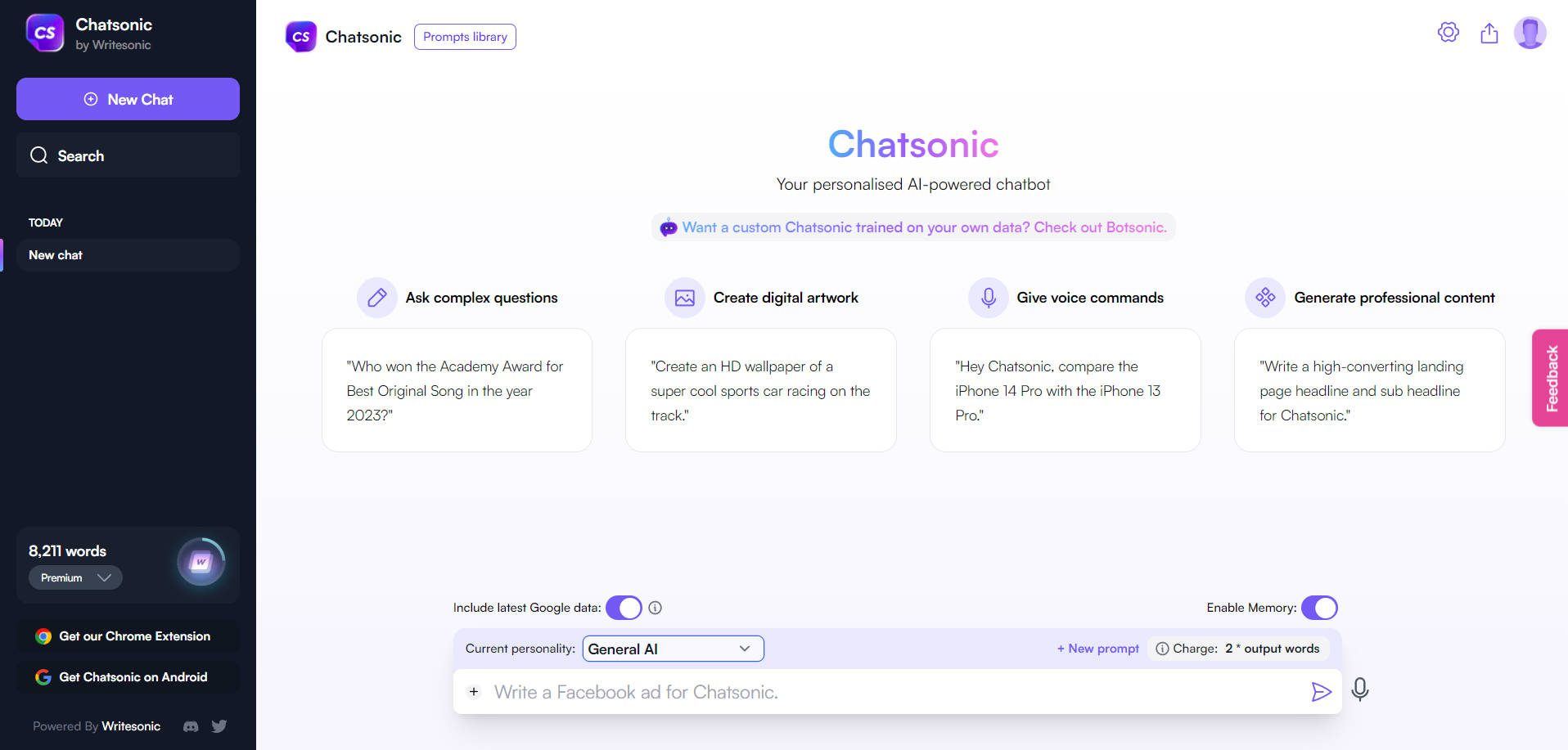
5. Poe
Poe is a unique platform developed by Quora that aggregates multiple AI models into a single interface. Users can interact with various chatbots like GPT-3.5 Turbo and Claude within Poe’s environment. Launched to streamline access to different conversational agents, Poe allows users to switch between models depending on their specific needs.
Poe’s key features include multi-model support, offering flexibility with different AI engines, and an intuitive chat interface similar to messaging apps for easy adaptation. It also fosters community engagement by allowing users to share insights and prompts, encouraging collaborative learning around AI-driven conversations.
Poe’s similarity to ChatGPT lies in its conversational capabilities; however, its standout feature is the flexibility it offers through multiple models. This allows users to tailor their interactions based on the task at hand—whether they need creative writing assistance or factual information retrieval. Additionally, Poe’s user-friendly chat interface mimics popular messaging apps, enhancing accessibility.
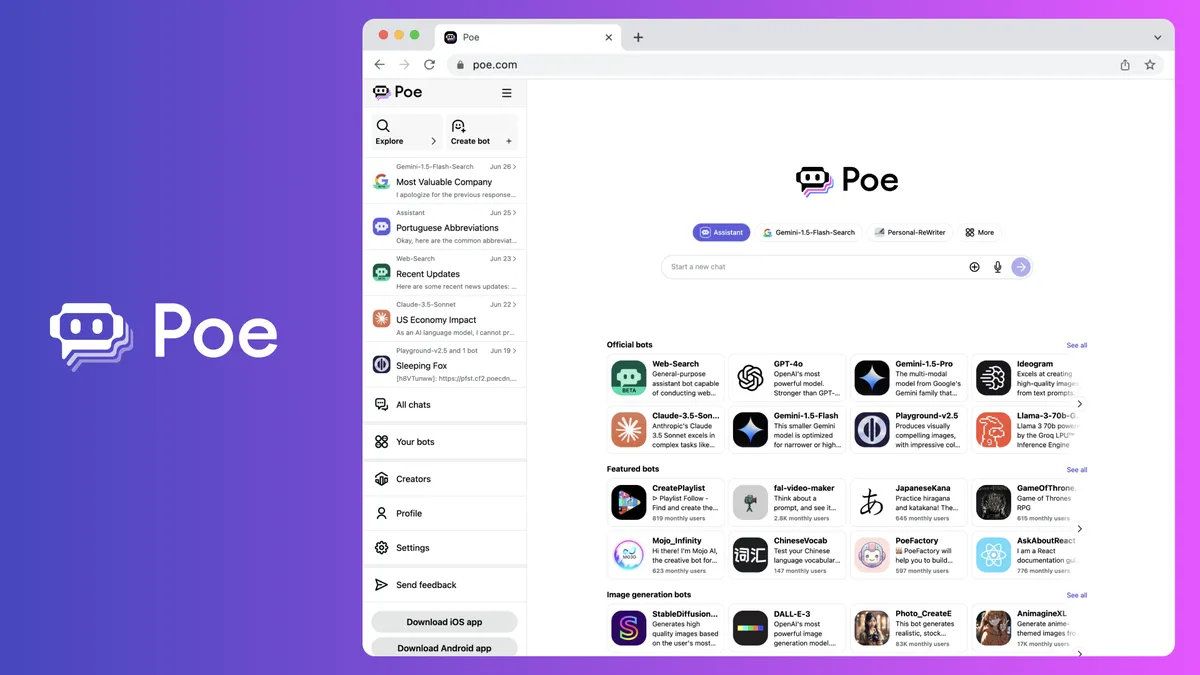
6. Pi
Developed by Inflection AI, Pi is a personal AI assistant designed with a focus on user-centric interaction. Unlike traditional chatbots that respond based on prompts alone, Pi aims to understand user preferences and provide personalized assistance across various platforms such as WhatsApp and Facebook Messenger.
Pi’s key features include a personalized interaction model that adapts to user behavior for tailored experiences and voice recognition for seamless communication. It also emphasizes emotional intelligence, recognizing sentiment in messages to offer empathetic support, making it ideal for mental health applications and casual conversations.
Pi shares similarities with ChatGPT in generating human-like responses but emphasizes emotional intelligence and supportiveness in its interactions. Its unique approach includes voice interaction capabilities that allow users to communicate through speech rather than text alone—an innovative feature not commonly found in other chatbots.

7. Jasper AI
Jasper AI has carved out a niche specifically within marketing and content creation sectors since its inception as Jarvis.ai in 2021. It serves as an AI writing assistant capable of generating blog posts, ad copy, social media content, and more based on user inputs regarding tone and style.
Jasper AI excels in content generation with features like customizable templates, tone adjustments, and SEO optimization, catering specifically to marketers and writers. Its intuitive interface and collaborative tools make it easy to create high-quality content quickly.
While Jasper operates similarly to ChatGPT in generating creative text outputs, its focus on marketing applications makes it distinctively valuable for businesses aiming for targeted content strategies. Jasper’s ability to analyze marketing best practices further enhances its utility compared to more generalized tools like ChatGPT.
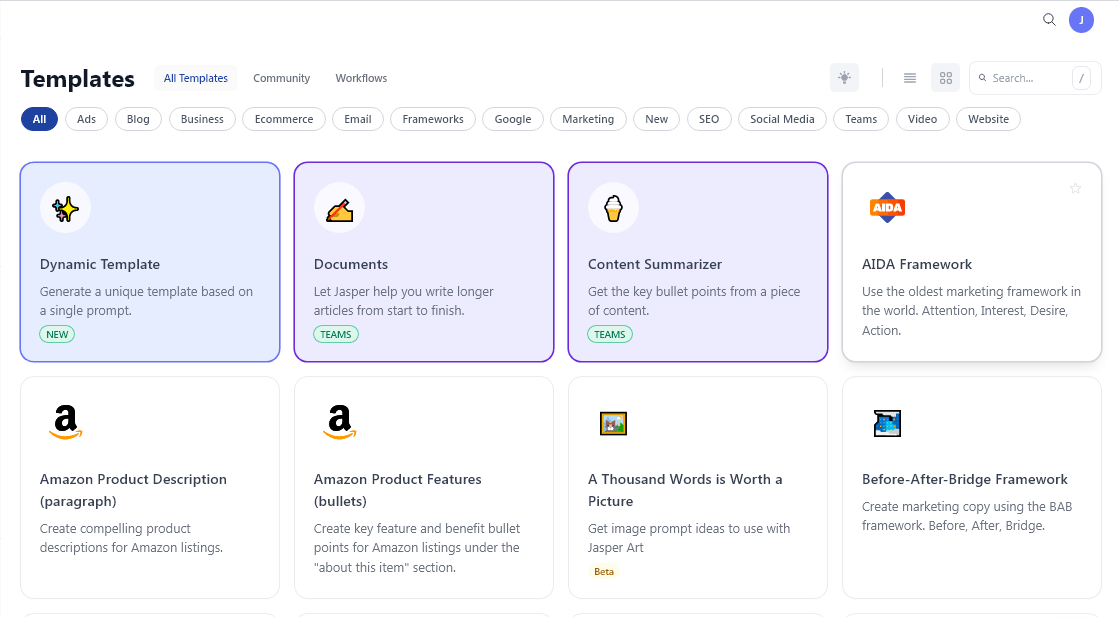
8. Claude
Claude is developed by Anthropic and represents a significant advancement in conversational AI technologies. Named after Claude Shannon—the father of information theory—this model emphasizes safety and ethical considerations in its design philosophy. Claude is capable of engaging in complex reasoning tasks while maintaining a commitment to being helpful and harmless.
Claude offers advanced natural language processing capabilities, providing nuanced conversation context and ensuring safe and responsible interactions. Its ability to understand complex queries and provide detailed responses makes it suitable for a wide range of applications.
Similarities between Claude and ChatGPT include their conversational interfaces; however, Claude stands out due to its ethical framework guiding interactions. This focus on safety makes Claude particularly appealing for organizations concerned about responsible AI use while still requiring robust conversational capabilities.
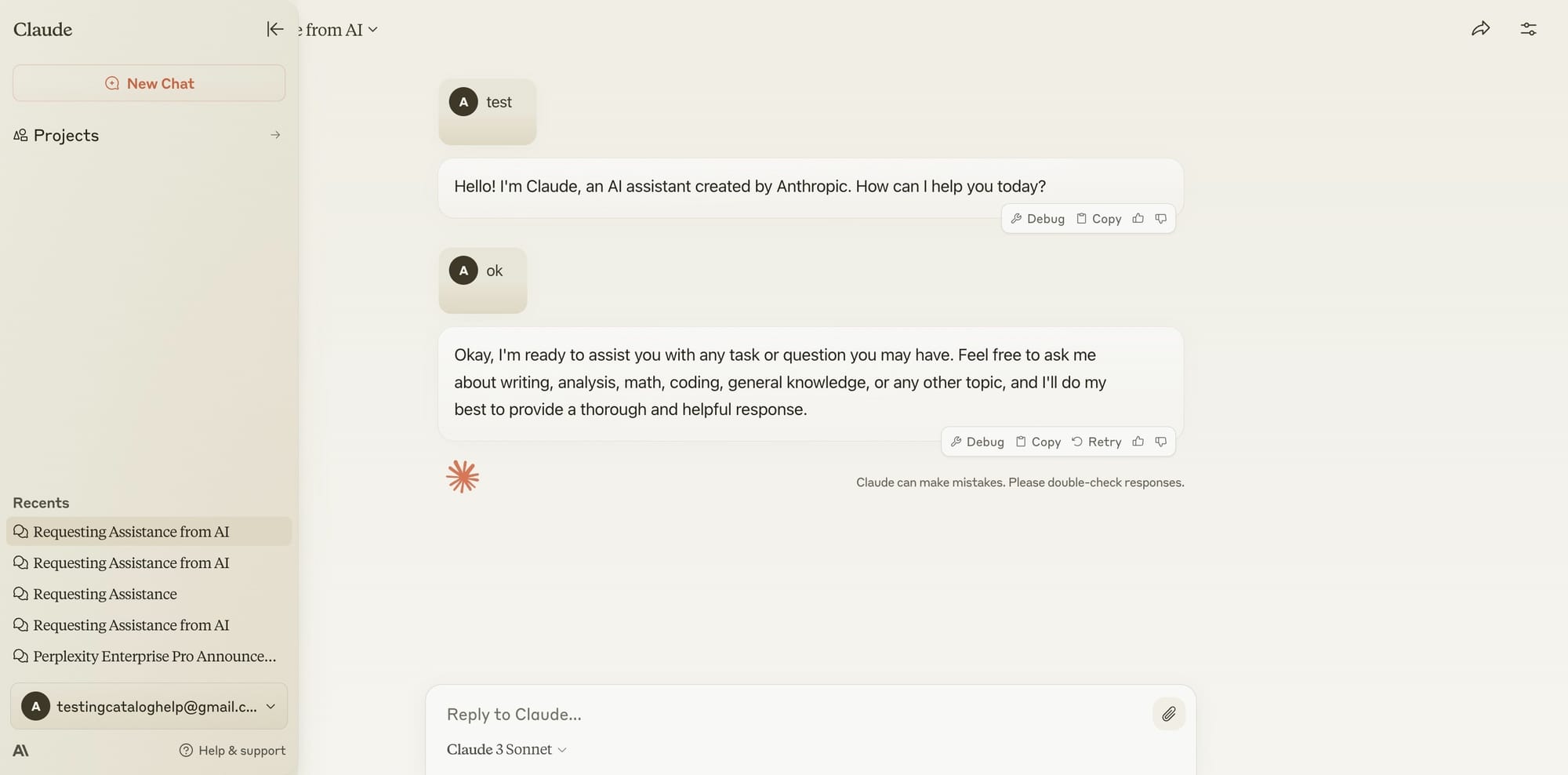
9. YouChat
YouChat is part of the You.com suite of applications designed for enhanced privacy during online interactions. It integrates advanced natural language processing algorithms similar to those used by ChatGPT but emphasizes user data security by not storing personal information or prompts.
YouChat combines chatbot functionality with real-time search capabilities, allowing users to access immediate information during conversations. This integration ensures that users receive accurate and up-to-date responses, enhancing the overall chat experience.
The primary advantage of YouChat over ChatGPT lies in its privacy-first approach while still delivering engaging conversational experiences. Users can interact without fear of data retention or misuse—a critical factor for those prioritizing confidentiality in their online engagements.
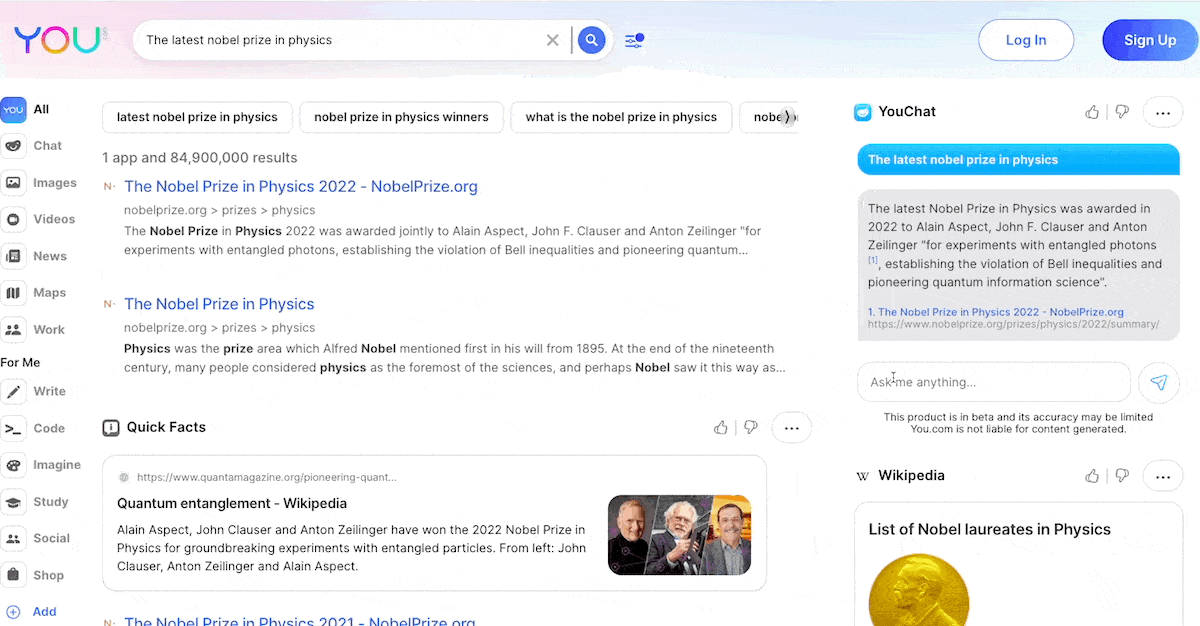
10. Meta AI
Meta’s entry into the conversational AI space with Meta AI showcases its commitment to leveraging advanced machine learning technologies like Llama 3 models for interactive experiences. Available across Meta’s platforms such as Facebook and Instagram, Meta AI provides users with seamless access to chat functionalities integrated into their social media interactions.
Meta AI focuses on multimodal understanding, allowing it to process and integrate text, images, and videos for richer user interactions. Its design emphasizes contextual awareness, making it effective for engaging conversations and creative applications.
While both Meta AI and ChatGPT offer similar conversational capabilities, Meta’s integration within existing social networks provides a unique advantage for users already embedded within those ecosystems. Moreover, Meta AI includes features like image generation that enhance creative possibilities beyond standard text interactions.
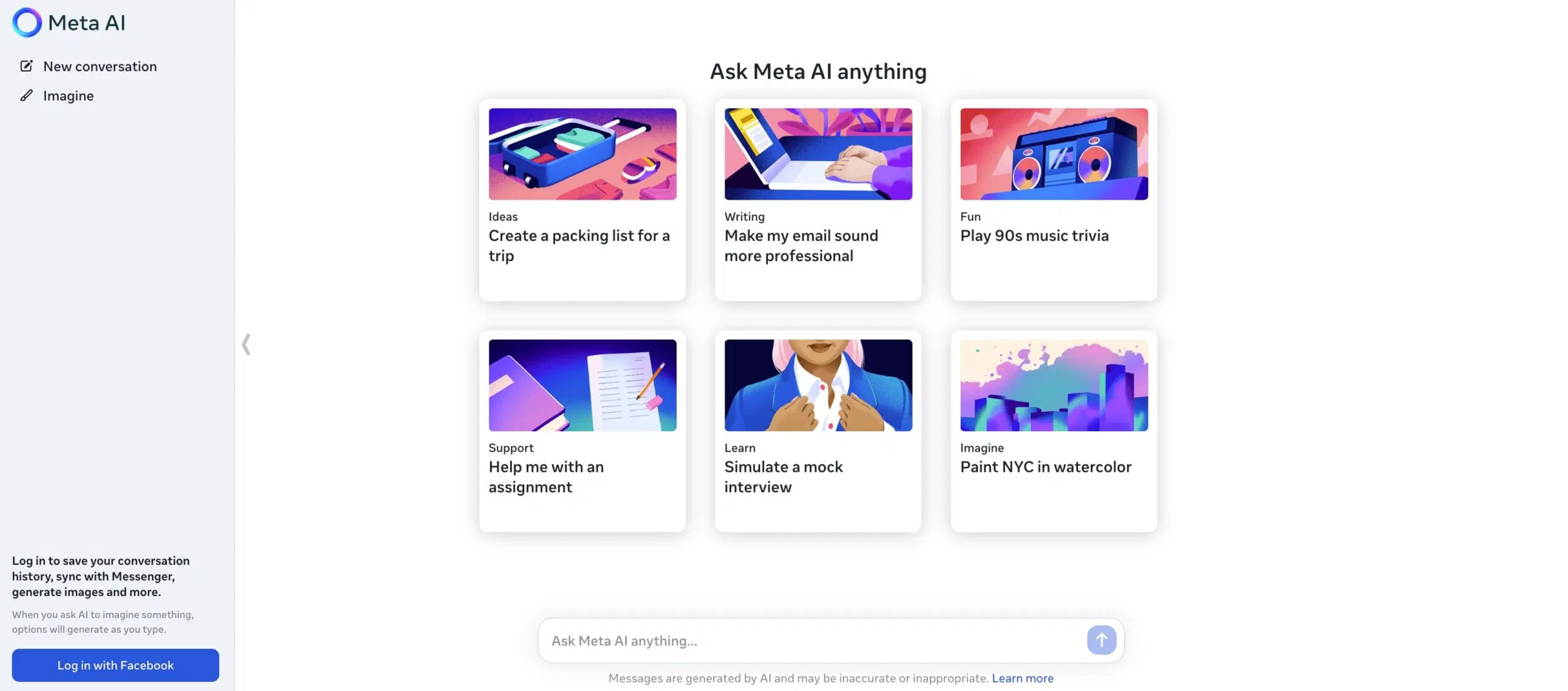
While ChatGPT remains a leading choice among conversational AIs due to its versatility and ease of use, these ten alternatives showcase the diverse landscape of AI tools available today. Each tool brings unique features tailored for specific applications—whether it’s enhancing productivity through integration with existing software or prioritizing user privacy during interactions—ensuring that there is an option suitable for every user’s needs in this rapidly evolving digital age.
If you would like to use an AI tool specific to your industry, check out our article on the best AI tools for each industry.














